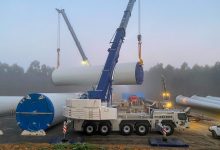An Australian software start-up seeking to address one of the key barriers to Australia’s transition to renewables has completed a $500,000 fund-raising round led by Grok Ventures, the private investment vehicle of software billionaire Mike Cannon-Brookes.
Gridmo was co-founded just over six months ago by two frustrated but passionate power system engineers, Jarman Stephens and Damien Vermeer, who now find themselves on a mission to modernise and streamline the renewable energy grid connection process.
As RenewEconomy has reported, connection agreements have been notoriously hard to obtain for many wind and solar projects around the country, with problems emerging at various stages of the process that has been known to take years and cost millions.
This, compounded by issues with permitting, labour and supply chains, has created a serious drag on the progress of Australia’s efforts to meet its target of 82 per cent renewables by 2030.
“Our mission is to reduce the timing and cost of those grid connections studies by an order of magnitude,” says Stephens.
“[We want to] help connect more than 10GW to the grid by 2028, enough to power 7 million homes.”
Vermeer says the main problem is that the current process to used model project power flows – which is vital information required by the market operator to run the grid smoothly and a prerequisite for projects to obtain a grid connection agreement – is no longer fit for purpose.
“Grid connection studies, which is what both Jarman and I did in our day job, before starting gridmo, it’s really hard,” Vermeer told RenewEconomy on Friday.
“It’s really important and it’s really complex.
“Engineers currently write, run and maintain bespoke scripts to simulate tomorrow’s grid.
“This practice was built for a grid containing a handful of large coal and gas generators – not the sheer number of renewable generators now needed.
“This problem is compounded by a significant shortage of power systems engineers to complete the work required to connect this volume of new renewable energy projects.”
Gridmo’s solution is a standardised software platform to complete grid connection studies. It’s not about cutting corners, but empowering engineers to complete the same vital studies faster and more reliably.
“This is not just a checkbox exercise,” Vermeer stresses. “This is us running thousands of studies on a plant to make sure that over the next 30 years it will survive events and not cause blackouts.”
The company works with engineers and across organisations using the app and says it has already helped five companies to connect grid-scale solar farms, wind farms and batteries across Australia.
“This is a software that can be used by anyone trying to complete grid connection studies faster, whether that’s a developer or consultant or… AEMO or a utility,” says Stephens.
“We’ve spoken with AEMO and the AEMC and … informed them of who we are and what we’re trying to do and our goals, and we’re always happy to have open dialogue with them about how we can help.
“You know, everyone in the industry has the same goal …we just want to see generation connected faster.”
Stephens says the funds raised this week are a welcome boost to the young company, which has had a break-neck first year of growth after being fast-tracked through the StartMate accelerator program.
“We were fortunate enough to be accepted into the new SmartMate accelerator program and went through a pretty intense 12 weeks which was, honestly, life changing,” he says.
“We worked with the amazing team there and adopted a really hard-working laser focused culture. And in that 12 weeks we designed, built and launched the MVP [minimum viable product] of the software and onboarded our first company. And … since then, we’ve got on with it.
“This funding is really critical to help us scale the business; to onboard more customers and really meet the demand for our business,” Stephens says.
“We have a wonderful relationship with the customers using gridmo and they’re suggesting amazing features that we need to build. And these features take people and time to build.
“So this this funding really means that we can continue to have that wonderful feedback loop with our users …We’re developing those features really, really quickly, so that’s where it is going to be useful.”
For Grok, which earlier this year announced it would no longer invest in listed equities, and focus instead on infrastructure and start-ups, gridmo is a good fit.
“Accelerating grid connections is one of the most important challenges we face in decarbonising our grid,” says Grok CEO and CIO Jeremy Kwong-Law.
“The team at gridmo are making the modelling requirements for these connections more streamlined and collaborative. We’re excited to back the team … who are experts in their field.”
It is also important for Cannon-Brookes own aim to reach zero emissions on the grid as soon as practical, and to advance the case for AGL Energy, in which he remains the biggest shareholder, to accelerate the phase out of Australia’s ageing and polluting coal fired power stations.
The investment round for gridmo raised $500,000, with $400,000 of that amount tipped in by Grok.
The investment follows more fund-raising for other Australian start-ups looking to transform the grid.
In the past week digital twin specialist Neara has raised $15.25 million to help its work finding new capacity in existing grids, while Australian firm Infravision has reportedly raised $36 million from global energy and utility investors to use its drone technology to string high-voltage power lines between towers.










